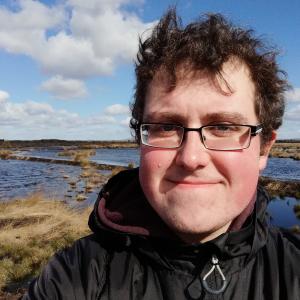In April I started by completing a chainsaw course! I was able to explore new sites such as Mere Sands wood and Three Sisters LNR. Learning the safe use of a chainsaw, I will be able to maintain pathways by clearing dangerous hanging dead wood, and also help to maintain areas of reserves such as meadows, which are very important habitats for many flowering plants. Overall this experience was challenging both physically and mentally, especially when I was being assessed! However, it was really rewarding as I have developed my skills further and I’ll be able to use this training in the future.
I was also able to work with Greater Manchester Combined authority. I sat in meetings and contributed to measures for a pilot study into the new strategy for Local Nature Recovery. It was great to have discussions with members of different organisations across Greater Manchester who were inputting into the measures and giving their feedback. This is a really important process as the pilot has allowed us to give our opinions on future strategies that the local authorities will use to help nature recovery across the rest of the country.
I attended several talks with the youth council, in which we discussed about the My Wild City project and My Wild Garden week. This is part of a campaign to engage people living in urban environments to get back in touch with nature and their gardens. This encouraged me to spend some time planting some wildflower seeds I had received from Manchester City of Trees in my garden. It was great to be involved in this as it encourages us all to let our gardens be wilder and inviting for insects and birds! I also attended a talk about City Nature Challenge. I briefly covered this in last months update as to start off May I will be recording as many wildlife species as I can in my local area for the big count, to encourage us all to get outdoors and develop our surveying skills.
I attended a volunteer session on Little Woolden moss last month, we were planting some bog plants on the mossland which will help to cover the bare peat areas and help to restore this important habitat, which is vital for carbon storage and water storage. I had a great time planting and talking with the rest of the volunteers, and being able to contribute and to make a positive change to the landscape. I also attended a site visit to Highfield moss, and looked at an area where the Lancashire Peatland Initiative are looking to turn into a wetland environment. It was great to being part of the planning process and seeing how the creation of bunds will have an affect on the water levels and help to create this vital wetland habitat.
I also attended a meeting with the Friends of Chat Moss group. They talked about the important work they do with Lancashire Wildlife trust to help restore mosslands across the area such as Little Woolden Moss, Cadishead moss and Astley moss. Their important work includes helping to encourage local people to get involved with volunteering and caring for our vital peatland habitats.
Last but not least, I had the opportunity to shadow the CEO of Lancashire Wildlife trust. I was able to sit in several meetings online and even a site visit to Winmarleigh, a lowland raised bog in amazing condition! This was an amazing experience as I was able to meet lots of people from Lancashire Wildlife Trust and organisations like the Environment agency and hear more about the future projects and ongoing works of the Wildlife Trust.
I was able to sit in on a meeting for the planning of Lunt meadows, an important meadow site and water storage area. It was interesting to see how much important work goes in to making decisions as it really opened my eyes. I went to a meeting with the Royal Horticultural Society to make links with them and their new site RHS Bridgewater. It was good to hear about their steps towards going peat free and how they want to help to engage younger people with gardening and nature. The site visit to Winmarleigh was great to visit a developed mossland site to see where other mossland sites in LWT will aim to look like and have an insight into the carbon farming trials there. Carbon farming is a really important strategy to encourage farming to be more sustainable by farming whilst also storing carbon to help reduce carbon emissions. It was really interesting to understand more about this and to see it in action.
Next month I will be developing my skills more training sessions such as mossland ID, getting more involved in the Friends of Chat moss group and developing my personal project. See you next month!
For more information about the Friends of Chat moss group, please follow the link below.

